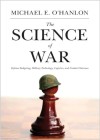The Science of War: Defence Budgeting, Military Technology, Logistics, and Combat Outcomes
Written by: Michael E O’Hanlon,
Princeton University Press, 2009,
ISBN 9781400830930, 280pp
Reviewed by: Mark Thomson, Australian Strategic Policy Institute
Michael O’Hanlon is a prominent figure in the US national security debate. As senior author of the Brooking Institution’s Iraq Index and its Afghanistan and Pakistan variants, he has done as much as anyone to promote an evidence-based discussion of ongoing US military operations. What sets O’Hanlon apart from many of his colleagues is his embrace of quantitative analysis and technical information.
In his latest book, The Science of War, O’Hanlon shares the tools of his trade. In effect, he has written a textbook of defence analysis in four parts. The first three chapters explore defence budgeting, combat modelling and force sizing, and logistics and overseas basing. In each case, the reader is introduced to an area of defence policy and shown how it is possible to gain substantial insight with basic data and the right analytic approach.
Some of the subject matter is unashamedly specific to the United States. Much of the chapter on budgeting, for example, explores the labyrinthine ways of the Pentagon and is likely to be of limited interest to Australian readers—though the principles remain valid. Of greater interest are the chapters on combat modelling and force sizing, and logistics and overseas basing, each of which is rich in insights directly relevant to Australian defence policy. It would be an interesting exercise, for example, to apply O’Hanlon’s techniques for estimating the scale of forces needed to undertake particular missions to the military tasks and force structure proposed in the 2009 Defence White Paper.
The fourth and final chapter in the main body of the book deals with technical issues in defence analysis. O’Hanlon begins by casting a critical eye over the much-vaunted Revolution in Military Affairs by examining the interplay of technology and warfare. His conclusions are a useful antidote to the often breathless claims that the future is about to depart radically from the past. The chapter continues with a survey of technical defence problems, including the military use of space, missile defence, and nuclear weapons and proliferation. O’Hanlon identifies and explains the essential technical issues in each of these areas with surprising clarity. The chapter concludes with a sensible discussion of the role of science in defence analysis.
Although the book’s subject matter is disparate and often technical, O’Hanlon maintains the reader’s interest by focusing on concrete problems. In part, this is achieved by posing and answering questions—fifteen in all—that range from evaluating the relative cost-effectiveness of B-52 and B-2 bombers, to estimating the scale of military operations necessary to secure Indonesia.
In answering these questions, as elsewhere in the book, there is never any suggestion that analytic techniques provide complete insight. To the contrary, O’Hanlon stresses the importance of also taking account of political and human factors when formulating defence policy. Nonetheless, by the end of the book, the case is made that policy without analysis is a second best option.
Although some familiarity with defence matters might be helpful, The Science of War can be read by interested non-specialists. Even the discussion of Lanchester equations (used for modeling combat attrition) has been rendered safe for those with rudimentary mathematics so that the results can be understood independent of the calculus. And for the reader wanting to know more, The Science of War contains numerous references and useful suggestions for further reading at the end of each chapter.
Despite its focus on US policy, the techniques in The Science of War are relevant to the defence policy problems faced by Australia. Academics and bureaucrats concerned with Australia’s defence would do well to read it. Even military officers familiar with operations research will find the book a useful compendium of practical defence analysis. And for those officers without such a background, The Science of War should be compulsory reading—equally so for students who aspire to work on defence issues inside or outside of government.

